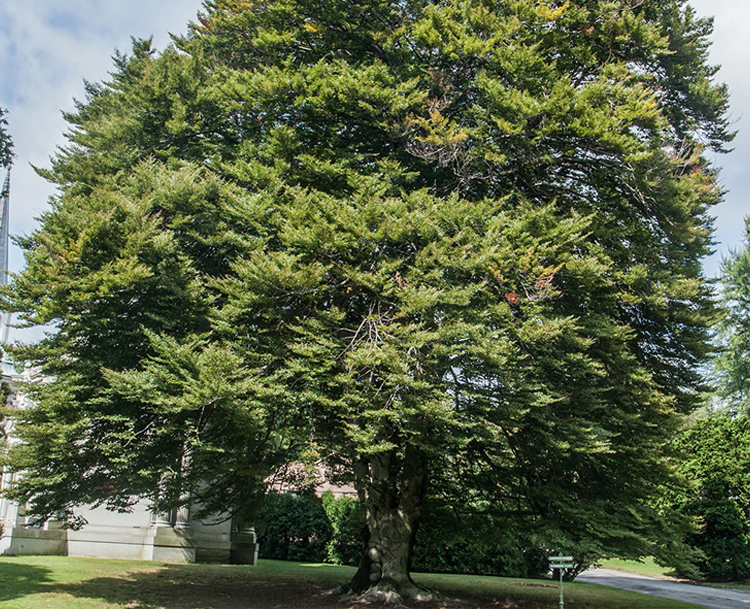ABOUT THE WOODLAWN ARBORETUM
The Woodlawn Cemetery Arboretum features more than 400 unique tree species and cultivars including an array of flowering, evergreen, and shade trees originating from North America, Europe, and Asia. The Arboretum harbors 11 specimens that are remarkable simply because of their overwhelmingly large size, measuring over five feet in diameter. These mature specimens include a Massive White Oak guarding the north edge of the Cemetery, a unique weeping European Beech (Fagus sylvatica), an unusual fine-leaved cultivar of the same species, an American Basswood (Tilia americana), and a Black Oak (Quercus velutina) that measures 6 feet across its trunk.

